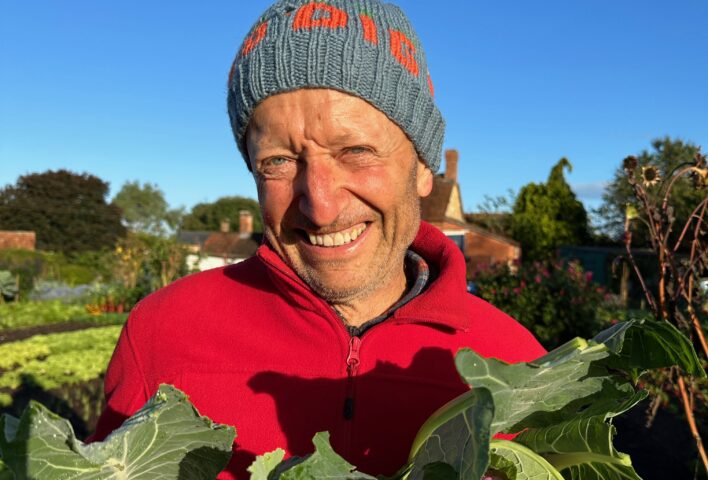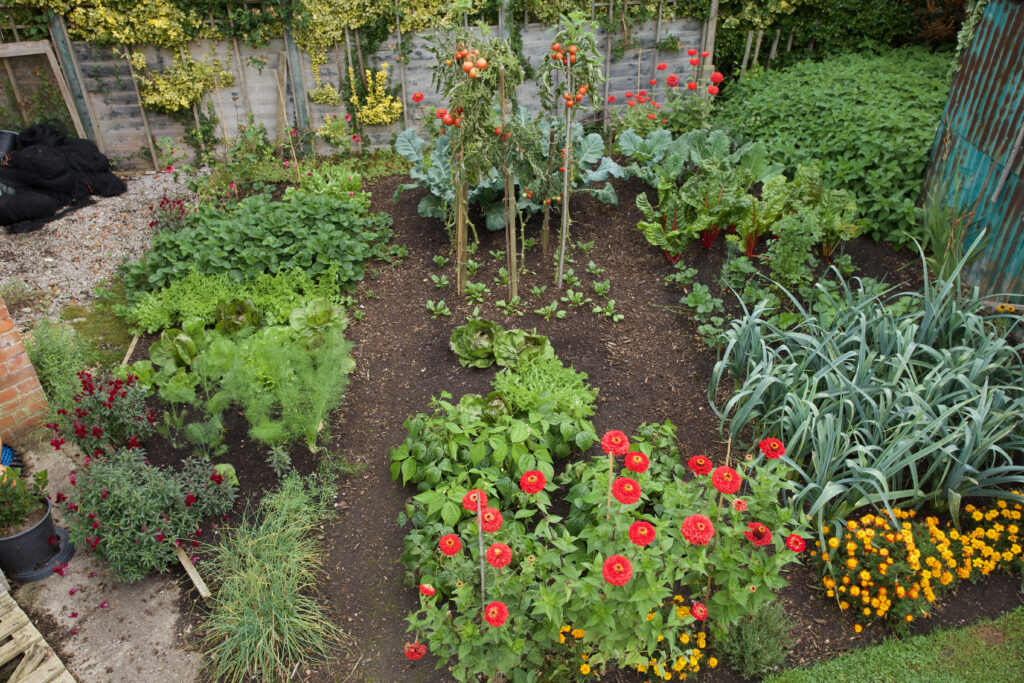September in the vegetable garden
Charles Dowding, No Dig gardener and writer, gives his tips for what to grow and how to take care of your plants this September.

Now is a fantastic opportunity to make sowings for
winter greens and salads. For regular cropping through winter, you mostly need to transplant under cover, in a greenhouse or polytunnel, or in containers for example on balconies.
Exceptions include lambs lettuce, sown before midmonth. It’s amazingly hardy and will give small harvests of nutty flavoured leaves, from November through winter outside. Claytonia also called winter purslane is another mild tasting, hardy plant. It’s sometimes called ‘miners’ lettuce’, because they would pick a few leaves from the hedgerow before going underground.

Spinach transplanted four weeks earlier under tomatoes in September
Mizuna and salad rocket are quick and easy when sown before mid-September. Growth is healthier than from spring sowings, because there are fewer flea beetles. Plus, the plants are not rushing to flower.
Under cover
For transplanting in a polytunnel, greenhouse, or in boxed containers in sheltered spots, early September is superb for starting lettuce, endive, spinach, kale, parsley and coriander. From mid month until the equinox sow salad rocket, mustards, land cress and Claytonia. Transplant them in your under cover space after three to four weeks, which allows time for tomatoes and cucumbers to finish growing.
Tomatoes
Help tomato plants under cover to ripen, by giving them no more water. That’s from early September if they are growing in soil. If they are growing in containers, reduce watering by half. Continue to remove side shoots so that plants are making no new growth of leaf or stem.
Outdoor tomatoes may have blight. If so, it’s fine to put all blight damaged leaves and fruits onto the compost heap. Blight spores do not survive in soil and compost.
join us for £3/month to read more articles!

This is an excerpt of an article featured in the latest issue (Summer/Autumn 2024) of our members’ magazine The Pod.
To read the full article, please sign up to become a member of the Vegetarian Society and get your copy of our Summer/Autumn 2024 magazine! Joining us costs as little as £3 a month.
